


10 Things you need to know when
riding in a group
If you’ve ever ridden your motorcycle in a group before, you may have had a less-than-happy experience where
tensions started to rise, and maybe you needed a little time apart from the group after the ride starts. You know
the kind of rides I mean ... where as soon as you get to lunch you check your phone hoping for some minor
emergency so you can exit gracefully and ride back solo.
The success or failure of a group ride largely has to do with the riding etiquette (or lack thereof). While some
groups share what’s expected of members when it comes to following traffic laws, riding staggered, hand signals,
etc., many times what ultimately determines the fun the group has is decided by the often unspoken group riding
etiquette rules.
The following are the top 10 rules I’ve found that make or break a ride based on trial and, unfortunately, a boatload
of error on my part.
1. Be on time.
There is no such thing as being fashionably late when riding with groups. "Early is on time. On time is late.” When
riding with a group, especially a new group, it's important to be respectful of everyone’s time. Most riders have
limited time on their motorcycles. There are few things more annoying than waiting around at a smelly gas station
for a straggler. And nothing will get you uninvited to a “private group ride” more quickly than being chronically
fashionably late.
2. Come prepared with the route details.
Unless the route is a complete mystery or you’re under the age of 10, don’t ask repeatedly, “Are we there yet?” If
you want play-by-play information such as how long until the lunch stop, potty break, or the destination, invest in
a GPS or print a copy of the route and bring it with you. Many ride leaders put a good deal of work into creating and
sharing the route in advance.
3. Know where to ride in the pack.
Rider placement in a group is important and different groups do things differently. Some groups prefer to put the
most relaxed or inexperienced rider behind the ride leader and other groups prefer to put them at the rear in front
of the sweep.
I showed up to a ride once where I was clearly 35 years younger than everyone else. I saw the AARP cards and
wanted to impress the group so I placed myself toward the front. Big mistake! As soon as we got to the first twisty
(barely a bend in the road) I was promptly “schooled” and had to wave four riders up or risk getting run over.
Don’t assume because you’re a fast rider in your familiar riding group that you belong in the front with a new group. Better to be polite than cocky.
4. Gauge break lengths by the leader’s actions.
If the leader hasn’t communicated how long the break will be, observe their actions. If they take off their helmet,
chances are you can take yours off too. Conversely, if they leave their helmet on that's a good indication it’s a quick
regroup or “gas-and-go” break. You should leave your helmet on too or risk getting death stares from your fellow
riders as they wait for you so the adventure can continue.
5. Be ready to saddle up at the end of a break.
A big no-no is after the leader has announced it’s time to saddle up, light up a cigarette, run in to get a coffee, or
decide you changed your mind and need a mother nature break after all. I kid you not, I’ve seen this on several
rides and few things cause angst in a group faster than waiting around for someone to finish their coffee or cigarette.
If you need frequent long breaks then take the initiative to form and lead group rides with other
like-minded/like-riding- style people. And for those with small bladders try either cutting back on the caffeine or
enjoying your coffee several hours before you are scheduled to ride so you aren’t having to stop more frequently
than the rest of the group.
6. Don’t get in front of the ride leader.
I have to admit I’ve been guilty of this on a few occasions. In my defense, the twisties are like a
siren’s call and before I know it I have a bee in my bonnet and I’m zipping past my buddy leading
the ride. Unfortunately, my bee is directionally challenged and often flies the wrong direction.
I actually have some GoPro footage of the head-shakes I got after I circled back and found my group
waiting at the turn I missed. I’m lucky my middle-aged pals didn’t jump me.
7. Be flexible.
Some of the best times I’ve had have been when things haven’t quite worked out the way we
planned. Whether it’s finding out the lunch spot is closed, the route gets detoured, or someone gets
a flat, attitude is everything when riding with a group.
8. See something, say something (privately).
As much as some of us like to believe we have eyeballs in the back of our head, when leading big groups it can be hard to see all the way to the last rider.
If you see something the ride leader needs to know, pull them aside and share it with them privately.
For example, if you notice that some riders are having a hard time with spacing or maintaining their speed, it could be an indication that they’re fatigued
and the group needs a break. The leader needs to know.
And by all means if you see something that impacts the group’s safety such as drug or alcohol consumption, speak up. You never want a group excursion
to end with an ambulance ride or worse! Tact and diplomacy are the key; how you say something is as important as what you say.
9. Ride your own ride.
Remember you’re not on a bus. Set your own pace and ride your own ride. You only have yourself to blame if you find yourself riding above your abilities.
If you fall behind many groups have a policy of regrouping at designated spots or waiting at turns so most of the time you will not be left behind.
However, if I’m joining a new group I make sure I’m familiar with the route and know
where the ride ends. One time I didn’t do this and got separated from the group and
missed a great dinner and worried the ride leader.
10. Saying thank you goes a long way.
A lot of work goes into organizing a ride, creating a route, producing GPS files and
maps, picking lunch destinations, promoting the ride, and leading it. Expressing your
appreciation for the organizer’s hardwork is one way to be invited again. Be sure to
thank the sweep as well. Done right, the sweep’s role is a tough job.
Critique privately but give accolades publicly whenever possible. Even if the ride didn’t
quite meet your expectations, thank the leader and keep your criticism to yourself.
As the old saying goes, “If you don’t have something nice to say then don’t say
anything at all.”
Great riding groups are a gift. Here’s wishing you lots of presents!
A story by Susan Orion
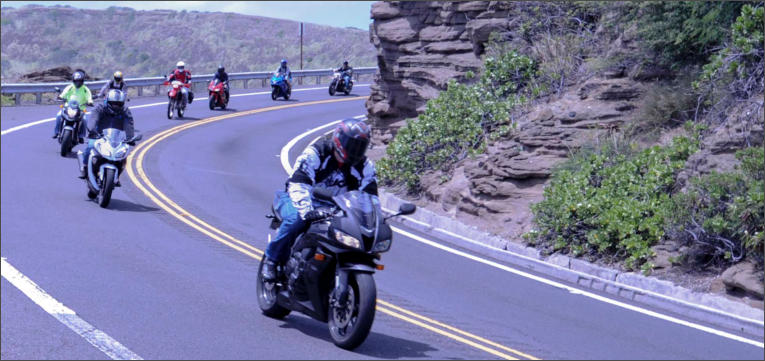
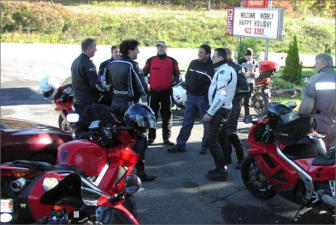
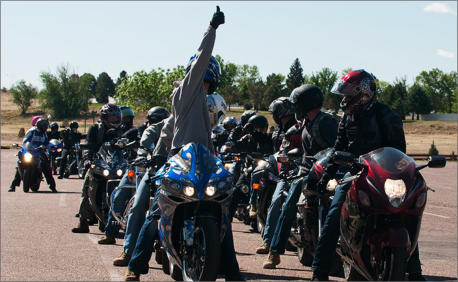
SHARE WITH US
Copyright © 2025 - Ozark Rides, All Rights Reserved








Copyright © 2025 - Ozark Rides, All Rights Reserved


10 Things you need to know
when riding in a group
If you’ve ever ridden your motorcycle in a group before, you may
have had a less-than-happy experience where tensions started to
rise, and maybe you needed a little time apart from the group
after the ride starts. You know the kind of rides I mean... where
as soon as you get to lunch you check your phone hoping for
some minor emergency so you can exit gracefully and ride back
solo.
The success or failure of a group ride largely has to do with the
riding etiquette (or lack thereof). While some groups share what’s
expected of members when it comes to following traffic laws,
riding staggered, hand signals, etc., many times what ultimately
determines the fun the group has is decided by the often
unspoken group riding etiquette rules.
The following are the top 10 rules I’ve found that make or break
a ride based on trial and, unfortunately, a boatload of error on
my part.
1. Be on time.
There is no such thing as being fashionably late when riding with
groups. "Early is on time. On time is late.” When riding with a
group, especially a new group, it's important to be respectful of
everyone’s time. Most riders have limited time on their
motorcycles. There are few things more annoying than waiting
around at a smelly gas station for a straggler. And nothing will
get you uninvited to a “private group ride” more quickly than
being chronically fashionably late.
2. Come prepared with the route details.
Unless the route is a complete mystery or you’re under the age
of 10, don’t ask repeatedly, “Are we there yet?” If you want
play-by-play information such as how long until the lunch stop,
potty break, or the destination, invest in a GPS or print a copy of
the route and bring it with you. Many ride leaders put a good deal
of work into creating and sharing the route in advance.
3. Know where to ride in the pack.
Rider placement in a group is important and different groups do
things differently. Some groups prefer to put the most relaxed or
inexperienced rider behind the ride leader and other groups
prefer to put her at the rear in front of the sweep.
I showed up to a ride once where I was clearly 35 years younger
than everyone else. I saw the AARP cards and wanted to impress
the group so I placed myself toward the front. Big mistake! As
soon as we got to the first twisty (barely a bend in the road) I
was promptly “schooled” and had to wave four riders up or risk
getting run over.
Don’t assume because you’re a fast rider in your familiar riding
group that you belong in the front with a new group. Better to be
polite than cocky.
4. Gauge break lengths by the leader’s actions.
If the leader hasn’t communicated how long the break will be,
observe their actions. If they take off their helmet, chances are
you can take yours off too. Conversely, if they leave their helmet
on that's a good indication it’s a quick regroup or “gas-and-go”
break. You should leave your helmet on too or risk getting death
stares from your fellow riders as they wait for you so the
adventure can continue.
5. Be ready to saddle up at the end of a break.
A big no-no is after the leader has announced it’s time to saddle
up, light up a cigarette, run in to get a coffee, or decide you
changed your mind and need a mother nature break after all.
I kid you not, I’ve seen this on several rides and few things cause
angst in a group faster than waiting around for someone to finish
their coffee or cigarette. If you need frequent long breaks then
take the initiative to form and lead group rides with other
like-minded/like-riding-style people. And for those with small
bladders (like me) try either cutting back on the caffeine or
enjoying your coffee several hours before you are scheduled to
ride so you aren’t having to stop more frequently than the rest of
the group.
6. Don’t get in front of the ride leader.
I have to admit I’ve been guilty of this on a few occasions. In my
defense, the twisties are like a siren’s call and before I know it I
have a bee in my bonnet and I’m zipping past my buddy leading
the ride. Unfortunately, my bee is directionally challenged and
often flies the wrong direction.
I actually have some GoPro footage of the head-shakes I got after
I circled back and found my group waiting at the turn I missed.
I’m lucky my middle-aged pals didn’t jump me.
7. Be flexible.
Some of the best times I’ve had have been when things haven’t
quite worked out the way we planned. Whether it’s finding out
the lunch spot is closed, the route gets detoured, or someone
gets a flat, attitude is everything when riding with a group.
8. See something, say something (privately).
As much as some of us like to believe we have eyeballs in the
back of our head, when leading big groups it can be hard to see
all the way to the last rider. If you see something the ride leader
needs to know, pull them aside and share it with them privately.
For example, if you notice that some riders are having a hard
time with spacing or maintaining their speed, it could be an
indication that they’re fatigued and the group needs a break.
The leader needs to know.
And by all means if you see something that impacts the group’s
safety such as drug or alcohol consumption, speak up. You never
want a group excursion to end with an ambulance ride or worse!
Tact and diplomacy are the key; how you say something is as
important as what you say.
9. Ride your own ride.
Remember you’re not on a bus. Set your own pace and ride your
own ride. You only have yourself to blame if you find yourself
riding above your abilities. If you fall behind many groups have
a policy of regrouping at designated spots or waiting at turns so
most of the time you will not be left behind.
However, if I’m joining a new group I make sure I’m familiar with
the route and know where the ride ends. One time I didn’t do
this and got separated from the group and missed a great dinner
and worried the ride leader.
10. Saying thank you goes a long way.
A lot of work goes into organizing a ride, creating a route,
producing GPS files and maps, picking lunch destinations,
promoting the ride, and leading it. Expressing your appreciation
for the organizer’s hardwork is one way to be invited again. Be
sure to thank the sweep as well. Done right, the sweep’s role
is a tough job.
Critique privately but give accolades publicly whenever possible.
Even if the ride didn’t quite meet your expectations, thank the
leader and keep your criticism to yourself. As the old saying goes,
“If you don’t have something nice to say then don’t say
anything at all.”
Great riding groups are a gift. Here’s wishing you lots of presents!
A story by Susan Orion
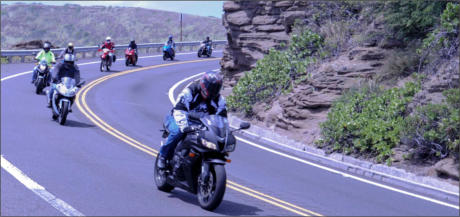
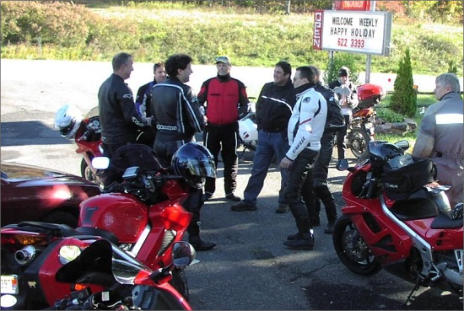
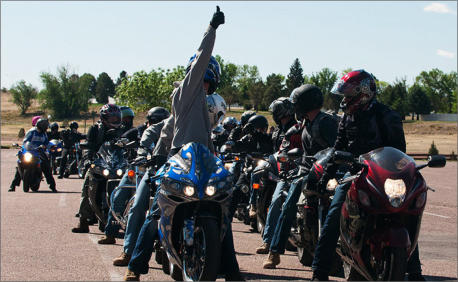



MENU




